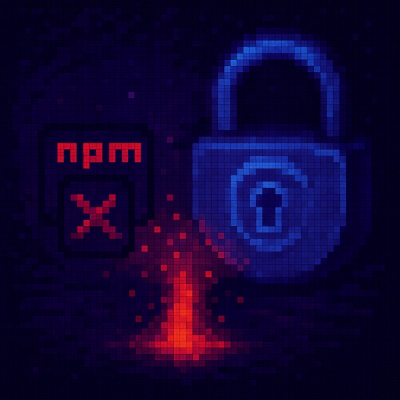🐍🔍 PyJess 
Cython bindings and Python interface to Jess, a 3D template matching software.














&style=flat-square&label=downloads&color=303f9f&cacheSeconds=86400)
🗺️ Overview
Jess is an algorithm for constraint-based structural template matching
proposed by Jonathan Barker et al.[1]. It can be used to identify
catalytic residues from a known template inside a protein structure. Jess
is an evolution of TESS, a geometric hashing algorithm developed by
Andrew Wallace et al.[2], removing some pre-computation and
structural requirements from the original algorithm. Jess was further
updated and maintained by Ioannis Riziotis
during his PhD in the Thornton group.
PyJess is a Python module that provides bindings to Jess using
Cython. It allows creating templates, querying them
with protein structures, and retrieving the hits using a Python API without
performing any external I/O. It's also more than 10x faster than Jess thanks to
algorithmic optimizations
added to improve the original Jess code while producing consistent results.
🔧 Installing
PyJess is available for all modern Python versions (3.7+).
It can be installed directly from PyPI,
which hosts some pre-built x86-64 wheels for Linux, MacOS, and Windows,
as well as the code required to compile from source with Cython:
$ pip install pyjess
Otherwise, PyJess is also available as a Bioconda
package:
$ conda install -c bioconda pyjess
Check the install page
of the documentation for other ways to install PyJess on your machine.
🔖 Citation
PyJess is scientific software, and builds on top of Jess. Please cite
Jess if you are using it in an academic work, for instance as:
PyJess, a Python library binding to Jess (Barker et al., 2003).
💡 Example
Prepare templates
Load Template
objects to be used as references from different template files:
import pathlib
import pyjess
templates = []
for path in sorted(pathlib.Path("vendor/jess/examples").glob("template_*.qry")):
templates.append(pyjess.Template.load(path, id=path.stem))
Prepare query structures
Load a Molecule
(a PDB structure) from a PDB file, create one with the Python API, or
convert it from a Bio.Model,
gemmi.Model,
or biotite.structure.AtomArray
object:
mol = pyjess.Molecule.load("vendor/jess/examples/test_pdbs/pdb1a0p.ent")
parser = Bio.PDB.PDBParser()
structure = parser.get_structure('pdb1a0p', "vendor/jess/examples/test_pdbs/pdb1a0p.ent")
mol = Molecule.from_biopython(structure, id="1a0p")
structure = gemmi.read_pdb_string("vendor/jess/examples/test_pdbs/pdb1a0p.ent")
mol = Molecule.from_gemmi(structure[0], id="1a0p")
pdb_file = biotite.structure.io.pdb.PDBFile.read(f)
structure = pdb_file.get_structure(altloc="all", extra_fields=["atom_id", "b_factor", "occupancy", "charge"])
mol = Molecule.from_biotite(structure[0])
Match templates
Create a Jess
instance and use it to query a against the stored templates:
jess = pyjess.Jess(templates)
query = jess.query(mol, rmsd_threshold=2.0, distance_cutoff=3.0, max_dynamic_distance=3.0)
Process hits
The hits are computed iteratively, and the different output statistics are
computed on-the-fly when requested:
for hit in query:
print(hit.molecule().id, hit.template().id, hit.rmsd, hit.log_evalue)
for atom in hit.atoms():
print(atom.name, atom.x, atom.y, atom.z)
Hits can also be rendered in PDB format like in the original Jess output,
either by writing to a file directly, or to a Python string:
for hit in query:
hit.dump(sys.stdout, format="pdb")
🧶 Thread-safety
Once a Jess
instance has been created, the templates cannot be edited anymore,
making the Jess.query method re-entrant and thread-safe. This allows querying
several molecules against the same templates in parallel using e.g a
ThreadPool:
molecules = []
for path in glob.glob("vendor/jess/examples/test_pdbs/*.ent"):
molecules.append(Molecule.load(path))
with multiprocessing.ThreadPool() as pool:
hits = pool.map(jess.query, molecules)
⚠️ Prior to PyJess v0.2.1, the Jess code was running some thread-unsafe operations which have now been patched.
If running Jess in parallel, make sure to use v0.2.1 or later to use the code patched with re-entrant functions.
⏱️ Benchmarks
The following table reports the runtime of PyJess to match N=132 protein
structures to the M=7607 templates of
EnzyMM, using J=12 threads to parallelize.
v0.4.2 | 618.1 | 135.4 | N/A |
v0.5.0 | 586.3 | 142.7 | x1.05 |
v0.5.1 | 365.6 | 228.9 | x1.69 |
v0.5.2 | 327.2 | 255.7 | x1.88 |
v0.6.0 | 54.5 | 1535.4 | x11.34 |
v0.7.0 | 52.4 | 1597.5 | x11.80 |
Benchmarks were run on a quiet i7-1255U
CPU running @4.70GHz with 10 physical cores / 12 logical cores.
💭 Feedback
⚠️ Issue Tracker
Found a bug ? Have an enhancement request ? Head over to the GitHub issue tracker
if you need to report or ask something. If you are filing in on a bug,
please include as much information as you can about the issue, and try to
recreate the same bug in a simple, easily reproducible situation.
🏗️ Contributing
Contributions are more than welcome! See
CONTRIBUTING.md
for more details.
📋 Changelog
This project adheres to Semantic Versioning
and provides a changelog
in the Keep a Changelog format.
⚖️ License
This library is provided under the MIT License.
The JESS code is distributed under the MIT License as well.
This project is in no way not affiliated, sponsored, or otherwise endorsed
by the JESS authors. It was developed
by Martin Larralde during his PhD project
at the Leiden University Medical Center in
the Zeller team.
📚 References
- [1] Barker, J. A., & Thornton, J. M. (2003). An algorithm for constraint-based structural template matching: application to 3D templates with statistical analysis. Bioinformatics (Oxford, England), 19(13), 1644–1649. doi:10.1093/bioinformatics/btg226.
- [2] Wallace, A. C., Borkakoti, N., & Thornton, J. M. (1997). TESS: a geometric hashing algorithm for deriving 3D coordinate templates for searching structural databases. Application to enzyme active sites. Protein science : a publication of the Protein Society, 6(11), 2308–2323. doi:10.1002/pro.5560061104.
















&style=flat-square&label=downloads&color=303f9f&cacheSeconds=86400)


